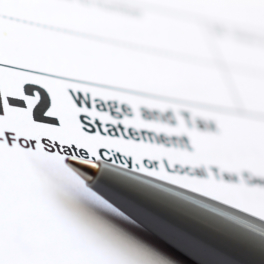

Power of Rebalancing
When it comes to investing, the best advice to make money has always been to buy low and sell high. That adage may sound like a poker player telling you that the easiest way to win a hand is to have the best cards at the table. Of course, if you pick the right stock, or are dealt the perfect hand in poker, it’s hard to lose money.
Unless you are cheating, though, there’s no way to know which cards you will be dealt in poker, and there’s no way to know that a stock you pick is going to go up in value. So what can you do to consistently buy low and sell high? The answer is two-fold; diversify and rebalance, both of which are surprisingly easy to do.
Diversification is a Free Lunch
The easiest way to diversify is to buy a mutual fund that invests in a broad, well-diversified array of individual securities. An index fund will hold hundreds or even thousands of individual securities to give you exposure to a specific slice of the investment world. By buying several different well-diversified funds, you can create a portfolio of securities spanning all sorts of different investments.
Rebalancing Helps You Buy Low
The next step is to rebalance your portfolio regularly. Different slices of the investment world perform differently through various market conditions. Assets such as bonds or bond funds tend to hold a fairly consistent value over time. Assets like stocks or stock funds tend to fluctuate more in value, but also tend to provide greater growth over time. The act of rebalancing is simply making sure that the different portions of your portfolio remain in proportion. This ensures that your portfolio maintains the right risk profile for your situation long term – and with the additional benefit that in doing so, you make sure that you regularly and systematically sell some of the things that have grown (sell high) and purchase more of the things that have shrunk (buy low).
A Case Study
Let’s start with a portfolio of $100,000 invested equally in two mutual funds, BOND-FUND and STOCK-FUND.
Now, let’s say that throughout a year of investing, the BOND-FUND decreases by 5% in value ($2,500) and that the STOCK-FUND increases by 25% ($12,500). After the year has gone by, the portfolio is now worth $110,000, but it is no longer equally invested in the two mutual funds.
Now there is an opportunity to sell some of the STOCK-FUND (selling high) and buy the BOND-FUND (buying low).
During the next year, let’s assume there is a major pullback in the markets such that the STOCK-FUND drops by 30%, but the BOND-FUND actually increases by 5%.
If you didn’t rebalance when you had the opportunity, then your portfolio would have been more risky going into the market downturn, and you would have seen a bigger drop in value for not rebalancing ($16,375) than if you had chosen to rebalance ($13,750) at the end of the last year.
Now, we can see the portfolios are in a position to be rebalanced yet again. Each year brings new opportunities to rebalance the portfolio – new chances to buy low and sell high.
This example involves somewhat extreme market movements to clearly make the point, and also simplifies the world into just two major asset classes. In the real world, rebalancing generally involves smaller moves between more asset classes (U.S. stocks, international stocks, small company stocks, real estate stocks, high yield bonds, etc.), but the outcome remains the same: value is consistently and systematically added by buying low and selling high
To Summarize
A major key to successful investing is to buy low and sell high, and to do so systematically so as to remove the emotion from investing. Broad diversification limits the risk of any one stock, sector, or geography, and rebalancing helps keep a portfolio’s risk level consistent with your comfort level. It also does this in a systematic fashion, because frankly, we can be our own worst enemies when emotions are mixed with investing!




